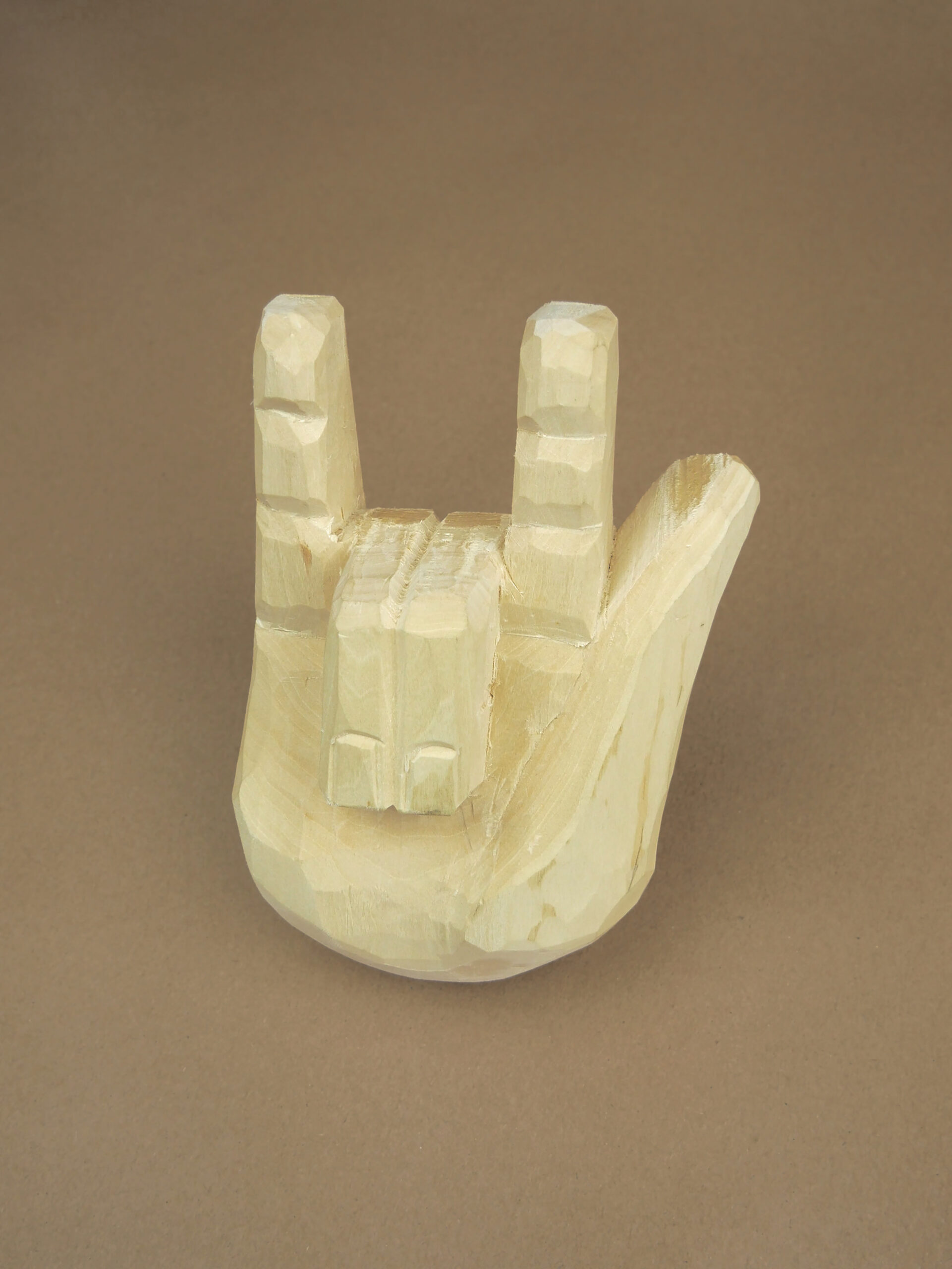apotropaion
photography, object (lime wood 16.5 cm)
2021
Researchers associate the figurine of a hand with the spread-out index and little fingers with shamanic rites of the cultures of the Deaf, originally dispersed in North America. Some researchers argue that shamanism was invented precisely in the cultures of the Deaf, which may be indicated by the etymology of the word “shaman”.
In Tungusic languages, this word is derived from “to know” or “to see”. Such an origin of the word “shaman” combines the tradition of shamanism with the cultures of the Deaf and their visual as well as spatial tradition of communication and accumulation of knowledge.
Discussions about the function that was fulfilled by this shamanic attribute have still not come to an end. Some believe that the figurine in the form of an over 2 metres high sculpture placed on a wood pedestal delineated the area within which shamanic rituals were performed. According to the traditional beliefs of the cultures of the Deaf, the figurine of a hand with the spread-out index and little fingers was granted the force of protection against evil spirits, in particular those causing disagreement. The sustenance of love, mutual respect, and a sense of unity within the group was one of the primary features of the cultures of the Deaf. Staying outside the group meant death for an individual. Numerous wood, metal, and stone figurines between 5 cm and 20 cm high, found in the whole North America, Siberia and recently also in Northern, Western and Central Europe, may indicate the existence of cultures of the Deaf also outside North America.
The small figurine of a hand with the spread-out index and little fingers could fulfil the function of an apotropaion, which was handed by the shaman to the patients to maintain the effects of treatment
text by: Magdalena Dunaj, anthropologist
photography by: Daniel Kotowski
object by: Daniel Kotowski, Jan Szymański
